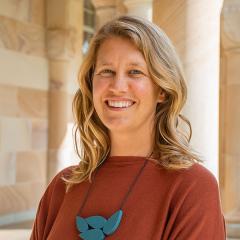Malaysia is ranked the twelfth most biologically diverse country in the world and is part of the area in the western Pacific Ocean known as the Coral Triangle. However, growing coastal populations, over-fishing and illegal fishing, pollution and the loss of iconic species (such as sharks) threaten the persistence of coral reef, mangrove and seagrass habitats in the region. Increasing threats and Malaysia's more than 250 species of hard corals, 360 species of fish, Endangered green turtles and dugongs, make the country a high conservation priority.
Since 2010, CBCS members Hugh Possingham, Carissa Klein, Maria Beger, Jennifer McGowan and former members Matt Watts, Chris Brown and Viv Tulloch, have worked with the Malaysian Government (Sabah Parks) to develop a marine zoning plan for multiple uses with the goals of eradicating poverty, ensuring sustainable development and conserving habitats and threatened species such as green sea turtles and dugongs. Stakeholders from the region explored a variety of methods for designing the marine park, and chose to use Marxan with Zones to support the process. A series of training and consultation workshops were led by CBCS researchers to build the capacity of stakeholders and decision-makers from 10 different agencies. Ongoing advice was provided to the technical staff from WWF-Malaysia and Sabah Parks throughout the planning process, and CBCS members were part of a team that conducted a marine biodiversity field expedition to assess the region’s biodiversity (see http://youtu.be/bLZ8QNksTdM).
In June 2016, after over five years of consultation with CBCS researchers, and strategic planning and negotiation using Marxan, the largest marine protected area in Malaysia was officially designated by the Sabah State Government. The final zoning plan was created using the best available ecological and socioeconomic data – combining scientific surveys with existing coastal regulations and local knowledge of habitats, species and patterns of resource use to identify priority areas for conservation. The CEO of WWF-Malaysia, Dato’ Dr Dionysius, recognised the impact of this work, saying, “After such a long effort, it is great to have achieved landmark protection for this rich home of marine biodiversity. The Tun Mustapha Park is a global symbol of how we can collectively commit to serving nature and humanity.”
Photo credit: Eric Madeja, WWF Malaysia


